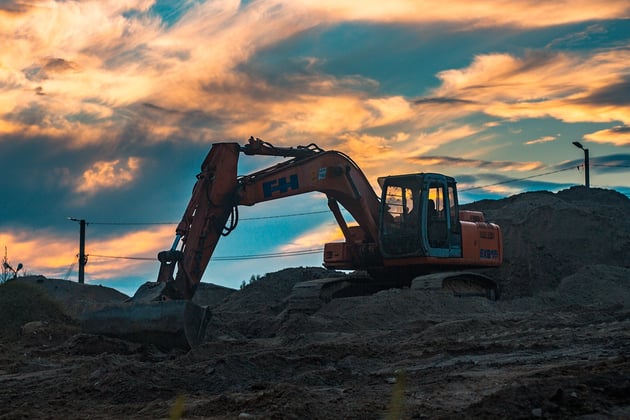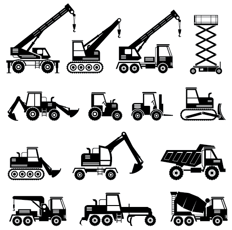Optimizing your Fleet shows 4 levels of maturity.
The lowest and most typical level: Fleet Tally
Tally, pen & paper and management by excel are the...

Every business decision must be quantified by data be it financial, experience or any other performance value. If you make a decision to purchase new vehicles you may want to define a goal for that investment. This goal should be reflected to overall strategic goals of the company, such as revenue and share of revenue generated by the investment. The pay back or the return of investment can be calculated in many different ways both simple and complex. Most important thing is that you have goal that you understand, you have means to measure towards your goal and you have means to interpret the measurements.
Investment opportunity: 4 Volvo, 5 Hyundai, 2 Doosan and 1 New Holland excavators.
Average price for one excavator: 200,000€
Total investment: 2,4 M€
What kind of KPI's do we need to measure in order to understand when the investment has paid back, assuming that we don't include the aftermarket value? We would need to understand how much indirect or direct revenue the machine brings for the company and how many hours the machine needs to be operating in order to be fully paid.
Assumption: the machines need to have telematics which is easily accessible and reliable.
What kind of data do we need too have prior to calculating the pay back time:
Average revenue per one excavator hour: 60€/hour
Average utilisation rate (8 hours/day) per one excavator: 50%
Average monthly hours of operation: 80 hours
Cost of monthly maintenance plan: 250€/month/machine
Break-even hours = 2,4M€ / 60€/h = 40,000h
Break-even per machine = 40,000h / 12 machines = 3334 hours /machine
Model 1.
If you want to gain more ROI with longevity of the machine:
8% win-rate per machine = 2,4M€ * 1.08 = 2,596M€
+8% Break-even per machine = 3600 h
Model 2.
If you want to gain more ROI with higher price per hour:
8% win-rate per machine = 2,4M€ / 64.8€/h
+8% Break-even per machine = 3086 h
Which one could be better success? Increasing prices vs. increasing machine Lifetime value?
One thought is that you never go wrong by planning actions towards longer lifetime, because anything can happen with market prices. Another thought is also interesting, by planning towards higher hourly price you reach the goal faster and the aftermarket value for the machine is higher due to the lesser hours used.
Earlier in this post we defined the metrics for average operating hours per month per vehicle. This will help us reflect the lifetime of the excavator when break-even values are known. Also, as we have set the monthly maintenance cost as a fixed planned service model, we can calculate two types of maintenance costs as well. Let's get cracking with the calculations with the model one calculation.
Model 1. = Lifetime of operating 3600h
Converting operating hours to calendar months
3600h / 80/month = 45 months
Calculating maintenance costs with monthly plan
45 months * 250€/month * 12 machines = 135,000€
5,6% of the fleet investment
Calculating maintenance costs with hour-based plan
Assumption: Cost per maintenance visit per machine is 1250€ - 2500€ depending on visit frequency.
Maintenance is done every 250 hours (every 3rd month)
3600h / 250 * 1250€ * 12 machines = 216,000€
9% of the fleet investment
Maintenance is done every 500 hours (every 6th month)
3600h / 500 * 1800€ * 12 machines = 155,520€
6,5% of the fleet investment
Maintenance is done every 1000 hours (once a year)
3600h / 500 * 2500€ * 12 machines = 216,000€
9% of the fleet investment
We can now make the decision to say that the monthly maintenance plan is optimal for two reasons:
How much would the monthly plan cost for the model 2.?
Model 2. = Lifetime of operating 3068h
Converting operating hours to calendar months
3086h / 80/month = 39 months
Calculating maintenance costs with monthly plan
39 months * 250€/month * 12 machines = 117,000€
4,9% of the fleet investment
Based on these calculations (many of them are assumptions) the Fleet Care Model 2. would be most optimal for many reasons. First of all, the small 4,8€/h increase in hourly rate would increase the revenues per month and profitability of the company in short term. Secondly, the fleet investment would be optimised for 6 months shorter period and therefore the aftermarket value for the fleet would be higher. The shorter investment period would also enable ability to acquire newer machine base faster. Finally, the optimised model for maintenance cost would be the monthly model which would lead somewhere in region of 5% of fleet value.
Telematics accompanied with automated rule based maintenance calls can improve processes and save time. This is very important especially on occasions when you don't live in an ideal world and you don't know the exact machine operation hours per month in advance. Let's assume we do only 60 machine hours per month or sometimes even 30 machine hours per month with the Model 2. plan. The monthly plan simply would not make sense. Given the winter months in the northern Europe, Asia and Americas, then excavator operation times are less than during spring, summer and autumn. This also lengthens the payback period.
Telematics can be used to set a rule to send an automated service request to your chosen maintenance partner at agreed interval. Let's say that you decide to make a plan to service your fleet at every 120 hours. With telematics you would not only gain the insights of how many hours have been operated, but you can also gain insights of bigger collisions and bumps, gain canbus-data in realtime and react on defects even earlier than the agreed 120 hours if needed or act as planned.
Digital Twin means less physical maintenance visits
Telematics unit cost is approximately 20-40€/month.
Model 2. = Lifetime of operating 3068h
Converting operating hours to calendar months
3086h / 120h = 26 service visits
Maintenance is done every 120 hours (including telematics cost)
26 visits * 340€ * 12 machines = 106,080€
4,4% of the fleet investment
Now if we look at different models of maintenance optimisation, we can say that the use telematics will come handy in any case and adds significant value. This leaves still a lot of room for arguing which model is the best when accidents take place, when telematics can detect outliers and so on. Our take is that you should design planned maintenance visits based on shorter periods and based on set thresholds of operating hours called automatically by telematics.

Tally, pen & paper and management by excel are the...
Leave a Comment